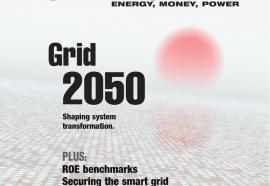American Public Power Association
Capacity Roulette
Out of market means out of luck—even for self-supply.
When the U.S. Federal Energy Regulatory Commission issued its so-called ”MOPR“ decision in April 2011, approving a minimum offer price rule (or bid floor) for PJM RPM capacity market — and then on the very next day did much the same for New England’s FCM capacity market — FERC did more than just prop up prices. Instead, it created a nightmare scenario for utilities that still own their own generation. These utilities, who choose to “self-supply” with their own plants, rather than buy capacity from either the RPM or FCM, adequacy rules, could now be forced to pay twice for capacity — if their own plants are deemed inefficient or uneconomic.
People (May 2011)
Capacity Contest
Raising the stakes in RTO markets.
Generators and demand-response providers are reaping rewards in forward capacity auctions, causing suppliers to go shopping for the most lucrative markets. Now the Midwest ISO is trying to catch up, by proposing its own auction for years-ahead resource bids. But does RTO shopping serve the interests of customers, who are legally entitled to rates that are just and reasonable? Why are some state policy makers advocating a return to old-school RFPs for long-term contracts?
Parochial Power Play
Northeastern politicians declare war on capacity auctions.
New Jersey Gov. Chris Christie in February signed into law a bill that will have the state commissioning construction of 2,000 MW of new gas-fired power capacity and dumping it into the PJM capacity market at a $0 price. Maryland is considering a similar capacity-dumping scheme. What’s behind these efforts to manipulate capacity auctions — regional constraints or local politics?
Not So Fast
Proving market performance requires detailed analysis.
Now that fuel prices have fallen recently from the highs seen in 2008 and wholesale electricity prices also have decreased, it might be tempting to attribute the lower prices to the restructuring of the wholesale electricity markets. Unfortunately, it’s a little more complicated than that.
Fingerprinting the Invisible Hands
Opaque markets inflate power prices.
Secrecy is the norm in electric power bidding. This lack of transparency impedes an efficient electricity market. Bringing daylight to power markets would reduce prices and save consumers money.
People (June 2009)
Dominion named Paul E. Ruppert as senior v.p.-Dominion Transmission. ITC Holdings Corp. appointed Edward M. Rahill to president of ITC Grid Development. Ameren Corp. promoted Karen Foss to senior v.p., communications and brand management, from v.p., public relations at Missouri subsidiary, AmerenUE.
NV Energy appointed Punam Mathur as v.p. of human resources.
Buyer's Remorse
The PJM complaint and the rising cost of electric reliability.
Who says ratepayers must accept the traditional measure of electric reliability—a single one-hour outage every ten years? If shown the bill ahead of time, might they decide otherwise; that such luxury is no longer affordable? Consumers are making similar decisions about gasoline and mortgages. Why not electricity?
No Generator Left Behind
A new theory on capacity markets and the missing money.
On Wednesday May 7, FERC will host a conference in Washington, D.C. that might prove extraordinary. The commission staff promises not only to review the forward capacity markets now operating in New England and PJM—each a story unto itself—but also to discuss a new rate-making theory that has come virtually out of nowhere and which proposes to help solve the notorious “missing money” problem.











